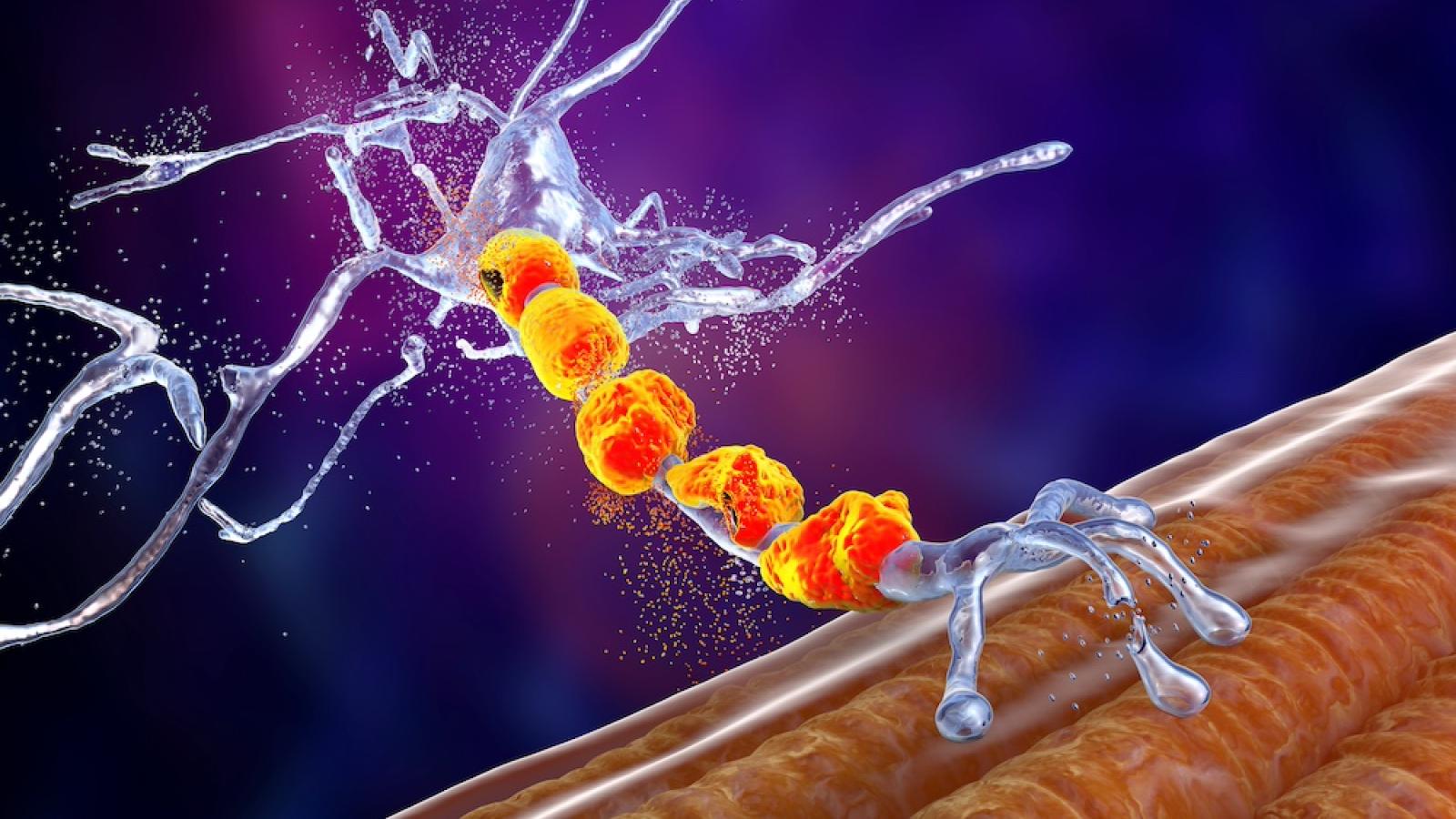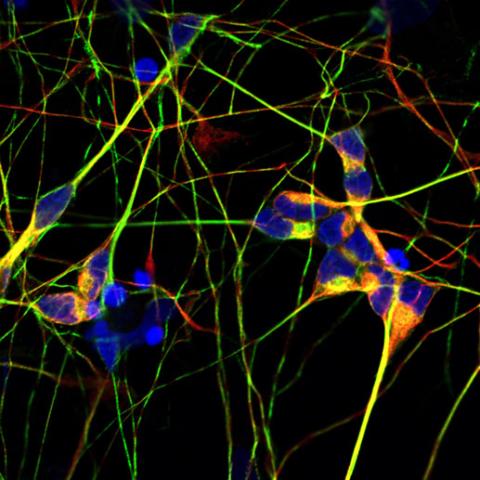Scientists led by Prof Adrian Isaacs (UK DRI at UCL) have developed an innovative screening platform that could accelerate the search for treatments for the most common genetic cause of frontotemporal dementia (FTD) and amyotrophic lateral sclerosis (ALS). In the study, published in Cell Reports, the team including collaborators from Alzheimer’s Research UK Drug Discovery Institute at UCL, as well as Prof Siddharthan Chandran (UK DRI Director) and Dr Bhuvaneish Selvaraj (UK DRI at Edinburgh) created a powerful new tool to study toxic proteins in human cells, allowing them to identify potential drug targets and mechanisms.
What was the challenge?
The research focuses on C9orf72, a gene that contains a hexanucleotide repeat expansion – a section of DNA where six nucleotides (GGGGCC) are repeated hundreds of times. This mutation leads to the formation of proteins known as dipeptide repeat proteins (DPRs) that contribute to neurodegeneration in FTD and ALS.
One of the greatest challenges in studying these toxic proteins has been that they are only present in low levels in cells taken from people with ALS/FTD, and are difficult to detect. Traditional detection methods that use antibody technology are sensitive, but difficult to use for large scale screening.
What did the team do and what did they find?
The researchers engineered stem cells taken from people with ALS/FTD to produce neurons containing a special tag called “HiBiT” attached to the toxic proteins. This tag acts like a molecular beacon, and allowed the researchers to detect and measure these proteins with unprecedented sensitivity.
Using this technique, the team conducted screening, and discovered that a group of proteins called telomere-associated helicases can modulate the levels of toxic DPRs. These helicases, which normally help maintain the ends of chromosomes (called telomeres), appear to play a crucial role in regulating the expression of toxic C9orf72 protein.
The team also found that a pathway involving ERK1/2 signalling influences the turnover of toxic proteins. When they tested a drug called trametinib, which targets this pathway, they found it reduced toxic protein levels and extended survival in a fruit fly model of the disease.
Our study reveals previously unrecognised mechanisms regulating dipeptide repeat proteins in C9orf72-related diseases. By creating this multimodal screening platform, we’ve not only identified potential new therapeutic targets for FTD and ALS but also provided a template that can be applied to study other repeat expansion disorders, potentially accelerating treatment development across multiple neurodegenerative conditions.
Group Leader
What is the impact?
The innovative platform developed by the researchers can be adapted to study other repeat expansion disorders such as spinocerebellar ataxias. It allows for large-scale screening of genetic modifications and potential drug compounds in a physiologically relevant model – neurons produced from people with ALS/FTD. The identification of the ERK1/2 pathway as a potential therapeutic target is particularly promising, as drugs targeting this pathway are already in clinical trials for other conditions.
Reference: Hölbling BV, Gupta Y, Marchi PM, Atilano ML, Flower M, Ureña E, Goulden RA, Dobbs HK, Katona E, Mikheenko A, Giblin A, Awan AR, Fisher-Ward CL, O'Brien N, Vaizoglu D, Kempthorne L, Wilson KM, Gittings LM, Carcolé M, Ruepp MD, Mizielinska S, Partridge L, Fratta P, Tabrizi SJ, Selvaraj BT, Chandran S, Armstrong E, Whiting P, Isaacs AM. A multimodal screening platform for endogenous dipeptide repeat proteins in C9orf72 patient iPSC neurons. Cell Rep. 2025 May 10;44(5):115695. doi: 10.1016/j.celrep.2025.115695. Epub ahead of print. PMID: 40349338.

